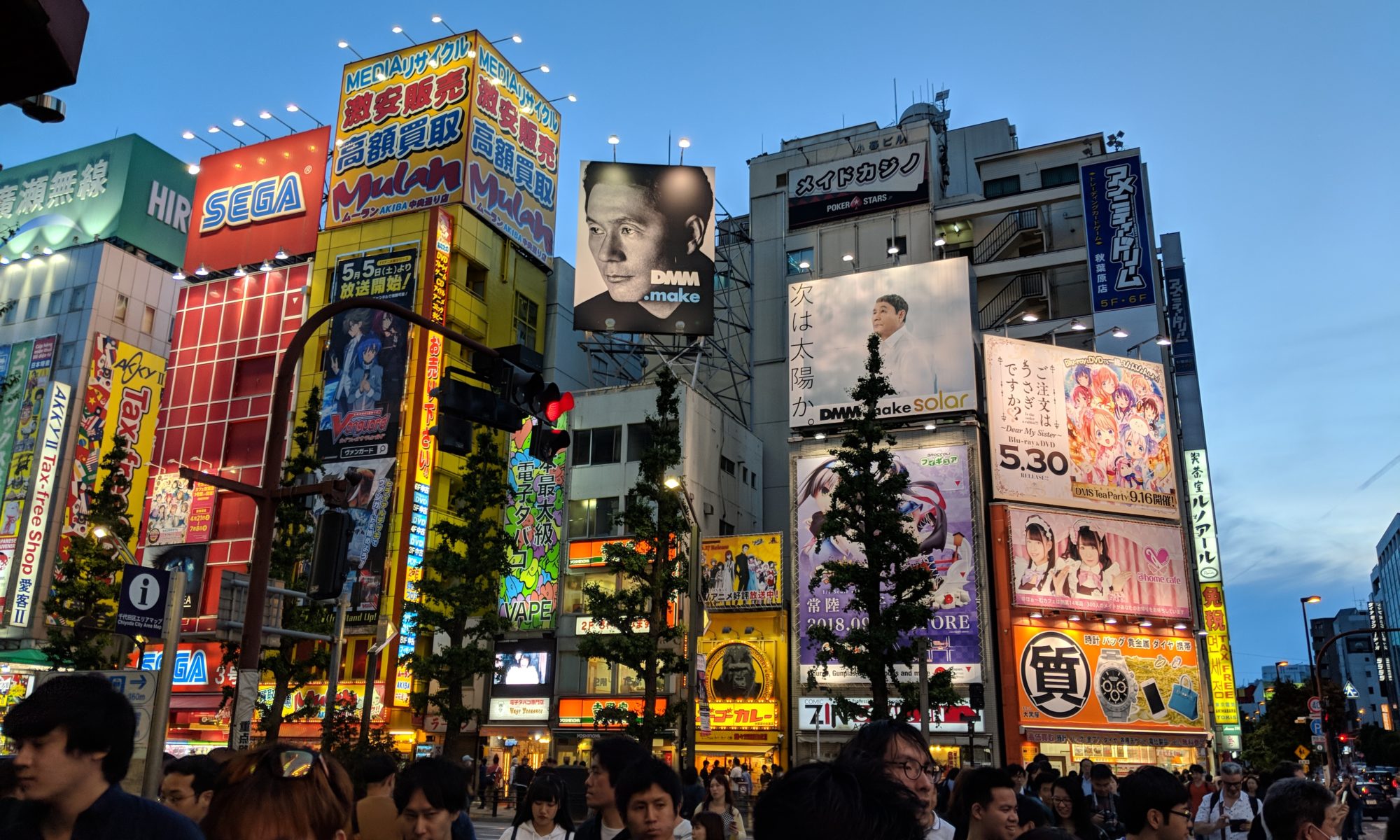For this series of entries, I will be explaining the steps I take in developing my startup during my placement year at the Northumbria Business Startup Hatchery. Hopefully, these monthly report-style blogs can be useful to someone in a similar position, who is looking to get started with developing their business idea. Continue reading “August Activity Report”
VRTGO Meet the Experts
VRTGO provided another great event for developers, in the form of it’s Meet the VR/AR Experts day, hosted in the Northumbria University conference rooms at the Northern Design Centre.
During the event, I got to see some of the most talked about VR demos in action. One of which was Epic Games Bullet Train experience, which utilised the Oculus Touch controllers.
July Activity Report
For this series of entries, I will be explaining the steps I take in developing my startup during my placement year at the Northumbria Business Startup Hatchery. Hopefully, these monthly report-style blogs can be useful to someone in a similar position, who is looking to get started with developing their business idea. Continue reading “July Activity Report”
VRTGO Labs Launch Event
VRTGO Labs held its launch event on Wednesday evening, in the suitably impressive venue of St Mary’s Heritage Centre, Gateshead. VRTGO Labs aims to be Europe’s first industry-led virtual reality (VR) and augmented reality (AR) centre of excellence. While I was unable to attend for long, there were some very interesting things going on inside.
https://twitter.com/HumphHardwicke/status/750786661252997120
June Activity Report
For this series of entries, I will be explaining the steps I take in developing my startup during my placement year at the Northumbria Business Startup Hatchery. Hopefully, these monthly report-style blogs can be useful to someone in a similar position, who is looking to get started with developing their business idea. Continue reading “June Activity Report”
NU Startup Experience 2016
Last weekend I attended the Start-up Experience hosted at Northumbria University Student & Graduate Enterprise, in association with the Startup Foundation and Santander Universities. The event ran from Friday evening until Sunday afternoon and was a cohesive mixture of informal talks and group tasks which would help us redefine our understanding of what startup means and gave us an overview of the agile approach to product/solution development.
#marshmallow challenge at #NUStartupWE @startupfndtn @NUOVOsociety @FIRST_ftf love it! pic.twitter.com/rUO7Q6bqcO
— Northumbria Uni Student and Graduate Enterprise (@NUEnterprise) March 11, 2016
VRTGO VR Developer Day 2016
Attending the VRTGO virtual reality (VR) developer day was a great experience, which helped me understand some of the issues and potential solutions that VR developers are working with today, and how that will have an impact my own designs. While some of the talks got very technical I felt I could keep up and took away some valuable insights which I can use in my future projects. Continue reading “VRTGO VR Developer Day 2016”
Animation – Dev Log #1
Our tutor had prepared us a set of rigs for us to begin creating test animations within Maya.

We examined how to break down and visualise the key points of human male locomotion. We study each keyframe and apply what we’d learnt to the model. Doing it this way worked out much better for me and I was able to get to grips with the task quite quickly, once I had orientated myself with the program interface. By apply improvements based upon feedback, I was able to smooth out jerky motions in the animation, by interpolating between keyframes. This added acceleration and deceleration to the velocity of the motions between keyframes and produced a much more realistic movement.

Computer Game Studies
I purposely missed out this update from the last post because I feel that I have a lot to express. The first lesson on a Monday is Computer Game Studies. In this session, we’ve been looking at and discussing a range of topics regarding video games.
In the middle of November, we looked at the behaviours of people involved in gaming culture, specifically the competitive or ‘pro’ gamers. This was examined through a cringe-worthy review of footage from early XBOX competitions.
It’s saddening to be reminded of how aggressive and ape-like people can be over games, regardless of any money involved. The vulgarity and disrespect that explodes from some of the players is something I imagine coming from a caricature of a football hooligan, not from those who enjoy pretending to be a super soldier in a fantasy world. All I see are bad losers and even worse winners, as I simply can’t relate to their attitudes towards each other.
Yes, video games are as competitive as any other activity like sports or gambling, but when I was younger my group of friends and I would revel in the chance to play multiplayer games together. Every now and then someone’s parents would be out for the day, so you’d take your controller and your memory unit to their house and squash into a room with some other kids who were filled with excitement. We wanted to see who was the best, sure, but it was still just a game, we didn’t need to worry about anything outside of our performance and enjoyment. Surely we weren’t alone in this, we couldn’t have been the only people actually appreciating the ability to play against some real people in our favourite games.
So what’s changed? There are fewer changes in gaming culture, which I can remember, that seemed to influence the behaviours of my fellow gamer as much as the arrival of online console gaming.

The rise of the internet gave us services such as XBOX Live, which allowed any console gamer with an internet connection to frag strangers online. The problem was that the lobbies for these online games soon became inundated with naïve young fellows, who thought that they should use this as an opportunity to abuse these strangers without fear of reprisals. While I imagine it to be true – that the P.C. platform had these problems before consoles – it was only with the popularity of games consoles, that this issue came screaming out of the television sets of many shocked and annoyed parents. I would say that most people play video games for entertainment, for fun; not to be called names, be screamed at or to engage in a slagging match with a cocky and offensive adolescent.
When we observe these negative behaviours online we usually have only a few options; engage the person, which only serves to make the problem worse; report the person, which never seems to be taken seriously; or, to ignore the person by muting their voice or just leaving the lobby, which I found the best option.
While I understand that these people – who engage in this type of verbal tennis – would say that they are trying to play mind games or to ‘psyche out’ the opponent, I disagree with their choice to do so. I see it as them only continuing to spread a meme, a one which serves to create/reinforce a stereotype or to alienate people who don’t play videogames and anger those who are already critical of video games. Yes, you’re a teenager or young adult and yes, you know a lot of swear words; but no, you don’t have to call your opponent out with witty remarks so you can feel better about yourself. Even if you claim that it’s harmless because it’s just for laughs or dramatised for T.V.
If you play games online or in competitions with your friends, then I believe there’s an opportunity for you to challenge the status quo. You can show people that you would rather be a good spirit, celebrate other people’s successes and learn from your losses humbly than berate them personally and debase yourself with trash talk.
I know that these bad attitudes will always be around and that I can’t say for sure if the world changed or my exposure to this made me bitter, but I guess what I’m trying to say is, “play nice kids”.
For our assignment in this lesson, I will need to research and write up about the history of the video games industry, starting with 1958’s ‘Tennis for Two‘.
I took plenty of notes on the subject and I look forward to starting this assignment because I remember doing a timeline/history essay on computers back in comprehensive school and getting praise for my writing. We have no hand in date for this yet but I’ll write up my notes over the holidays and see what else we need to do in January.
Steve also asked us to think up a shortlist, three points in our own gaming history which stood out and why. Here are my choices and why;
- Sega Megadrive – my first video game console which let me and my siblings play together with friends; with a great library of games.
- Final Fantasy VII – the first game which impacted me emotionally; had a convincing world which I wanted to explore for days; made me think about the power of the art.
- My first P.C. – enabled new experiences in an online environment; gave me the power to play and modify games; quickly became my hobby; expanded my knowledge because of its versatility.
Gone Till November
I ended up getting really busy towards the end of November and have subsequently fallen behind on my blog entries. I do plan to stay on top of them in future, aiming to get each entry published on the same day as the classes. Here are updates for progress made in the past two weeks for all my lessons.
Engines:
We are continuing to develop our platformer game in UDK and have included the use of; the LightMassImportanceVolume, for illumination; ReverbVolume (or ‘Ambient Zones’), to deal with localised sounds; creating traps and moveable platforms, by converting a static mesh and animating them using the Matinee function through Kismet.
I found the ReverbVolume made sense and there wasn’t really much I wanted to do with them other than get them in place and test them out, but I’m pretty confident that I could use them well in the future. Creating a crushing trap was also simple, but I wanted to work on getting the fan blade to rotate too, which Tobe explained how to do but we ran out of time before I could implement the solution we discussed.
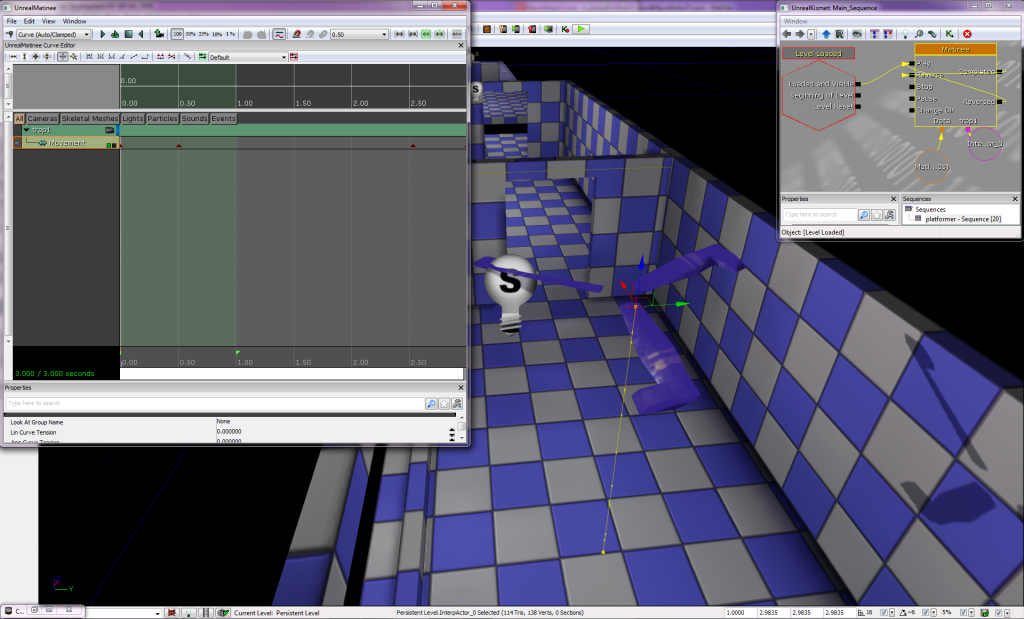
With this new knowledge, I should be able to construct a demonstration level, using the built-in assets. I plan to get this done over the break from university we have in December, so I can spend a solid amount of time on it in one go, which I find works best for me. When I finish it I will upload a video of me playing through the level, along with commentary on how I used my skills to achieve this. That will also give me an opportunity to get up to speed on video and audio editing, which I would like to know more about.
Tobe also addressed my earlier concern about scripting in UDK and stated that we will not be looking at learning this aspect of the engine, in light of the move to C++ in Unreal Engine 4, which was a concern I’d voiced previously. Phew!
Digital Art:
Martin tasked us with creating a turret from our own research/imagination, which we would use in our animation class. Since we would be animating the model, he asked us to make sure we include moving parts into its design.
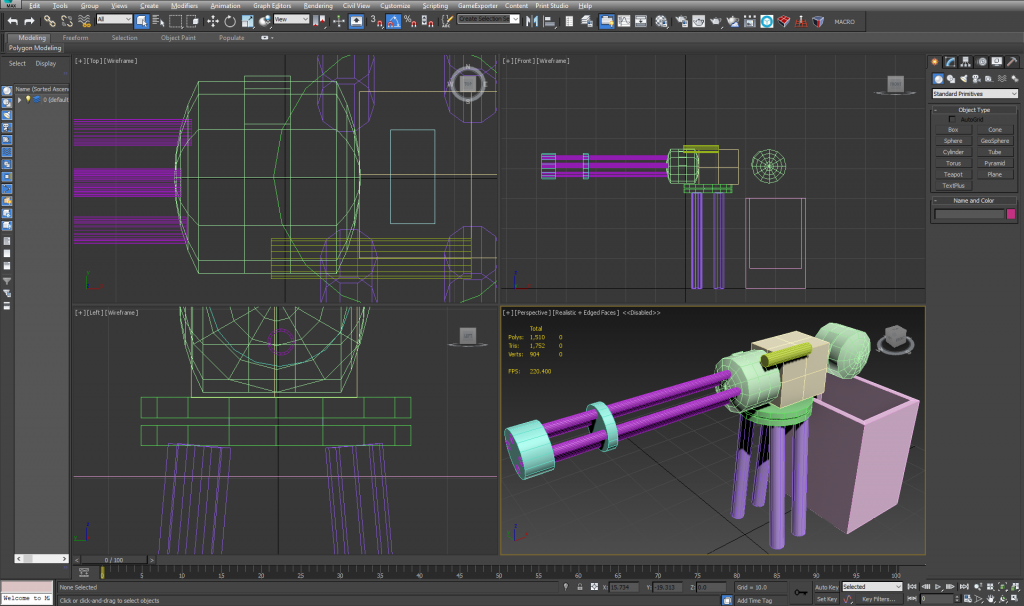
Every time we use 3ds Max I find myself getting confused over the user interface. Though this task went a lot smoother than earlier ones, I still feel I am missing some critical knowledge on how to manipulate the objects; such as, splitting and deforming individual polygons; or ‘baking’ the objects into a whole. These are things I feel I know how to do in Maya but seem unintuitive or hidden in 3ds Max.
I had followed some tutorials online previously but I feel I may have missed some important ones out, so I’m going to go back over these and practice making simple objects until I am happy with the level of detail I can achieve.
We have now begun working on another unit with Martin, which is titled ‘2D Digital Graphics for Computer Games’. In the lesson, we discussed and then done some research on the use of visual styles in video games.
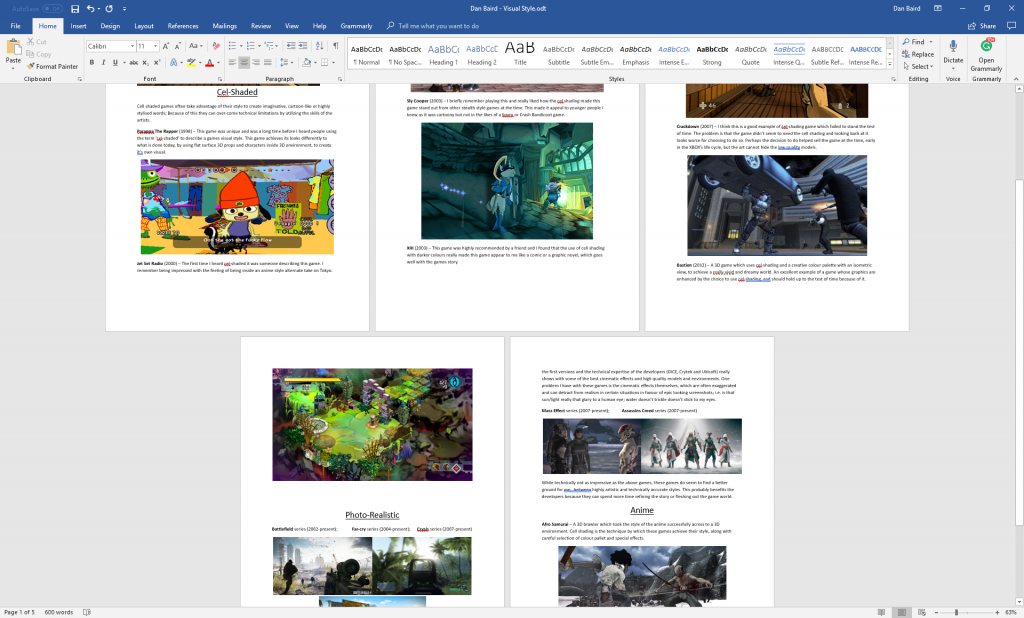
The three styles we looked at in class were photorealistic, cel-shaded and anime. we still have to present to the class, but here is a little of what I wrote.
On photorealism in Battlefield, Crysis and Far Cry:
F.P.S. games have always been in a technological arms race when it comes to graphics, which I guess is a good thing when your crossing the uncanny valley. All of these have been really good looking games since the first versions and the technical expertise of the developers (DICE, Crytek and Ubisoft) really shows, with some of the best cinematic effects, the highest quality models and the most detailed environments. One problem I have with these games is the cinematic effects themselves, which are often exaggerated and can detract from realism in certain situations in favour of epic looking screenshots; i.e. is that sun/light really that glary to a human eye; water doesn’t trickle or stick to my eyes like it does a camera; is that motion blur or is my character crying uncontrollably?
I’ll present this to the class next week and then I can use the feedback I get to update my opinions and put the presentation up here in its entirety when I’m finished.
Animation:
We spent some time revisiting and refining our walking animation which we first made earlier in the month.

I am convinced that the revised animation is superior and am happy that we got to revisit this, as I felt I had gotten it well the first time but it’s always good to go back and rework things to get better at them.
We also got to animate our turret, after importing it into Maya from 3ds Max. I can’t provide a sample as I must have saved the file to a temporary location on the college network. More fool me!
Contextual Studies:
I am having lots of fun in Lucy’s lessons, where we have continued to look at semiotics and representation in games.
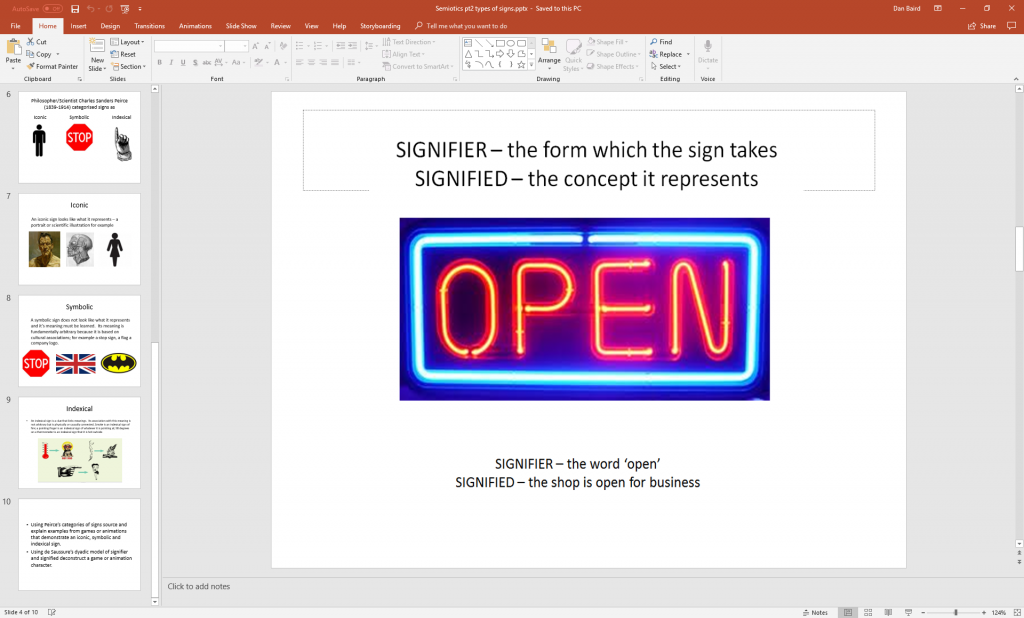
In class, we discussed how different parts of life are represented in games, such as; war, communism, consumerism, capitalism, sexuality, gender, race and ethnic groups, among others. This led to two short tasks, which had us create presentations on two subjects of our choice.
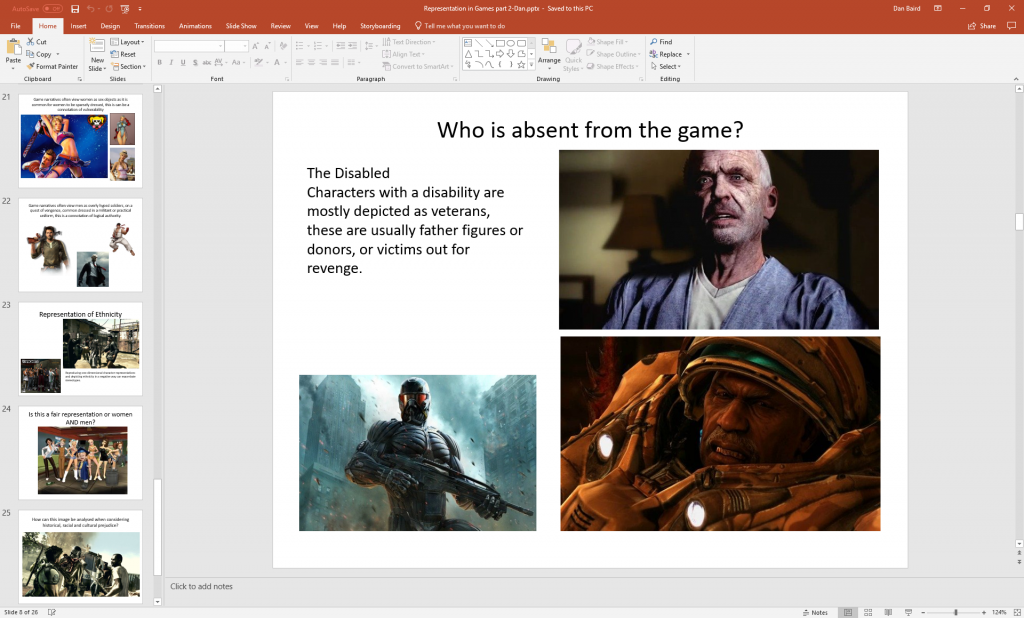
My first choice in class was to write about capitalism. Lucy explained she’d like us to examine three games and how our chosen topic is represented in each. I did a little research online and created a slideshow and commentary on three games; Greed Corp, The Sims (series) and Capitalism II.
I had positive feedback from the tutor at the end of the class but I do want to spend some more time getting my notes into order before I put this up for you to read.
Lucy had also asked us to go in depth on a specific video game character, using what we had learnt from analysing movie posters. I chose the Big Daddy, from one of my favourite games, Bioshock.
Given the combination of the underwater setting, their distinctly deep sound and dominant stature, it’s possible for me to imagine that the Big Daddy is the figurative ‘whale’ of the Rapture ecosystem. Whales have few natural predators, which is also true of the Big Daddy, and they can be described as serene creatures, which is how I would describe the Big Daddy when one is alone and unchallenged. I can’t draw a lot of parallels but I do find this idea still comes to mind again when characters call the protagonist “little fish” and the Big Daddy “Mr. Bubbles”.
– from my Semiotics of the Big Daddy article.
I really enjoyed doing this and I put a lot of hours into getting the wording and structure of the document correct. This has been a good exercise for me to practice my English writing skills, as I felt I had been having problems in class with explaining my opinions with enough clarity and writing in a structured and sensical manner.
Life Art:
We continue to look at drawing techniques and practising drawing from a live model. It’s been a great experience and I have been really trying to improve my work based on Dave’s feedback and my own critical analysis.
At the start of the last lesson I was told to find a picture, of anything, and to work the picture creatively into my drawing, to make something Dave described as “half human half whatever”. So this piece was a combination of the live model and a picture of a bonsai tree. I aimed to make the tree appear as if it was like growth from the body, coming out of the collar of the model.

The task was difficult as I had no reference of scale against the model, nor any real feel for the physicality of the plant itself. For example, I decided to scale the tree to fit around the forehead of the model, which to me seemed to throw off the proportions of the model. I would change if I was to re-do this piece, but perhaps it is just a product of translating the object from a photograph.

Dave pointed out that the face became too rigid and two dimensional from the bold strokes I had used, which I agreed with. He suggested to instead apply lighter, more suggestive lines instead of drawing the full features of the face and this worked out brilliantly. I will certainly try to avoid getting into too much detail, especially because I do prefer that minimalist style myself.
We where told there were pastels available so we could add some colour to the scene if we liked but to avoid getting overzealous with them. I did go for the pastels as you can see, but since I am not familiar with them I quickly made the mistake of applying them too heavily. I did manage to effectively disperse the colour by smudging the pastel enough to give it a more washed out look. Hopefully, I will get another chance to develop some skill in this area, perhaps I may buy some pastels to practice with after the new year.
